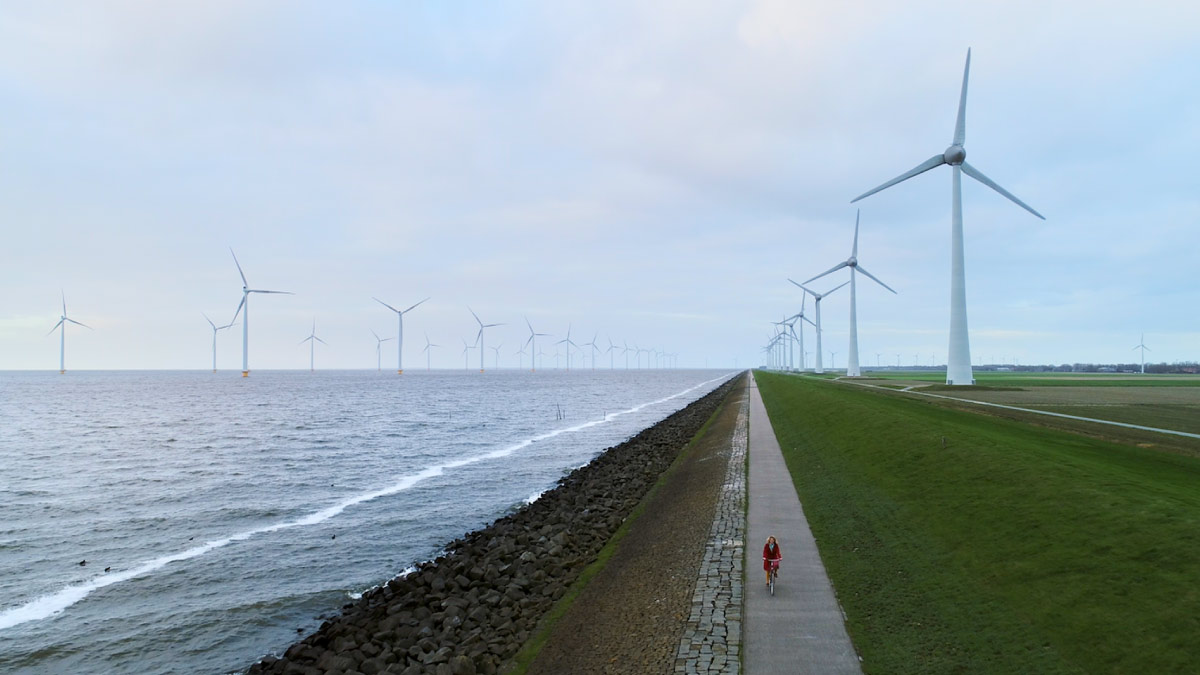Today, every organization should focus on sustainability. For the planet and for the business.
And data centers should be a key focus of any sustainability strategy. Energy-hungry and heat-generating data-center servers and switches draw up to 2 percent of all electricity in the United States alone. So, modernizing them with more energy-efficient components can have an enormous impact.
We spoke with Jeremy Foster, Cisco’s senior vice president and general manager of Cisco Compute, for insight into how Cisco is helping its customers take steps to lessen the impact of data-center operations on the environment. This includes its compute portfolio with the new modular UCS X-Series and Cisco Intersight, Cisco's IT operations platform delivered as-a-service.
Thank you, Jeremy. First off, what is the overall impact of data centers on energy resources and the environment today?
It’s big. Data centers globally consume more energy than some countries, and data-center power consumption in the U.S. can account for 10 to 50 times the energy per square foot of floor space compared to a typical commercial office building. All of this energy use comes from powering and cooling the networking and compute infrastructure that fuels the digital products, services, and experiences people use and rely on every day. So, many IT leaders are taking a hard look at their infrastructure and identifying where they are in their modernization journey to newer, more efficient solutions.
To what extent are IT teams and business leaders aware of this impact?
Energy efficiency has been a core focus in our product design for over a decade. And lately we've seen sustainability become more of a priority for our customers. It really is top of mind, and that doesn't just mean decisions around what product they will buy. It includes packaging, longevity of equipment, what vendors they will buy from, and what impact these decisions will have on their own customers. Because they need to balance what they are trying to accomplish from a sustainability perspective with maintaining the performance of their applications within the data center.
What are some key steps IT teams and business leaders can take to reduce energy demand?
Today, there are some great opportunities to reduce their carbon footprints. And there are three main topics that I would hit here: visibility, control, and impact on performance. Visibility comes from the fact that we collect data around how much power a particular device is using. But that data typically sits within the operations team.
What customers are looking for is to bring that over to the business side. In other words, they set sustainability goals as an organization. But how do they reach them? How do they use that data to answer some of those questions? That’s top of mind from a visibility perspective for many customers. So that they can understand the adjustments and the trade-offs they can make as they’re looking at the sustainability initiatives for the company and how they can better manage their infrastructure.
So, that brings us to control.
Yes, control starts with the kinds of technologies that are available to start optimizing power utilization. Typically, traditional IT operations tools were built without awareness of or control over energy consumed by the infrastructure they managed. But technology is changing rapidly. At Cisco, we're building energy-awareness and control into our data-center solutions to make power management simpler.
And, of course, it all has to make business sense and optimize performance, doesn’t it?
Yes, control comes back to performance. We have to make sure that we’re delivering everything in a way that doesn’t compromise on sustainability or performance. So, our customers can understand those trade-offs. Because once you have access to the data and understand how to control your infrastructure with policy, it’s a really important step towards managing and optimizing your performance.
How can the new UCS X-Series servers support more sustainable data centers?
We’ve been focused on sustainability for more than a decade. The first UCS server was built in 2009, and at that time energy consumption was already a concern for us. Fast forward to today, and the UCS X-Series is our most sustainable, modular server. So, sustainability is not something we started doing last week. We take it very seriously.
And what are some of the UCS X-Series’ capabilities and advantages?
To start, it’s a great foundation for modernizing your infrastructure and modernizing your applications. And if your server platform is even just two generations back, upgrading will enable you to reduce up to 66 percent of the number of physical servers you will need to deploy. We estimate it can also reduce up to 31 percent power and up to 39 percent in maintenance costs* Along with up to 27 percent less in software costs to maintain that environment. So, there's a lot of potential dollar savings there.
Let’s say a customer is looking to modernize an application environment, like, for example, a virtual desktop environment in a large organization. With the processing power in the UCS X-Series, this may serve up to two times as many standard virtual desktop sessions and nearly eight times as many GPU users on the same server as you could do three generations before. So, that’s a reduction in the number of servers, the power, the cost for the software, along with an increase in capabilities. There are business advantages to modernizing the infrastructure with the UCS X-Series.
And that includes visibility, control, and performance, as you mentioned.
Yes, as you modernize the infrastructure, there’s an opportunity to make sure you're modernizing the visibility, which we’re integrating with Cisco Intersight, our IT operations platform. This allows customers to leverage a cloud-managed platform across different locations. So, they can see where all their equipment is, and then control it through the new features and functions. That includes setting policies to manage the energy usage of servers. And they can add some of the power management offerings that folks like Intel are bringing to the table and operationalize those. If customers do modernization right there may also be financial and sustainability benefits, but there’s also the potential for operational, performance benefits.
Beyond energy savings, how is Cisco bringing circular-economy principles into these products?
We start by designing with sustainability in mind. And among many other things, we looked at how we could reduce the amount of raw materials that we’re using while also increasing the amount of recycled materials. We wanted to have an impact on packaging, so we reduced the amount of cardboard that wraps around individual servers when we ship them. Then we leveraged a modular server platform that’s more power efficient throughout its operational life. And, from a circular economy perspective, we wanted as much as possible to facilitate reuse and recycling and maximize products’ useful life. Our goal is to give a second life to our products. That saves energy on new manufacturing and reduces waste. So, our commitment extends across the lifecycle of the products we design and build.
What are you excited to see in the next few years?
We’re at a really cool inflection point. To name just a few exciting things we expect to see in the near future: liquid cooling may come to an enterprise data center near you. We’ve been working on that for a long time, and our next generation of servers may include it. It could help drive another level of efficiency from power-hungry processors. There will be several things from a software perspective that we plan to integrate with Intersight that can help us bring more to the forefront of operational technologies. And simplicity will be a central theme. We are hoping to make visibility and control much easier for our customers.
Overall, I think we’re going to see a lot of folks working together with their vendors across ecosystems to focus on these best practices and standards around sustainability within the data center. We haven’t seen this level of software integration and data integration across all those individual platforms. It’s going to make some great things possible.
*Based on internal Cisco lab tests.





